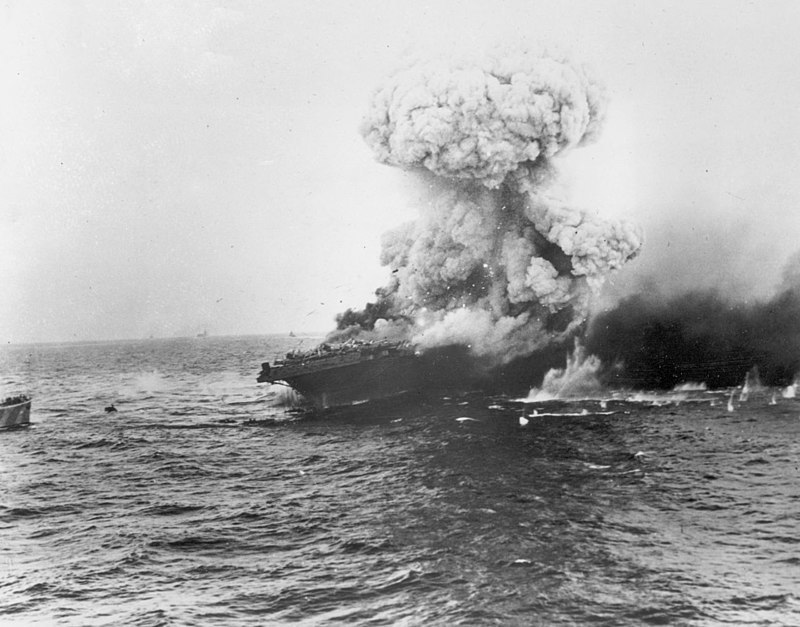From May 4 to May 8, 1942, the Battle of the Coral Sea took place between the Americans and Australians against Japanese forces in the Pacific Theater. This was the first naval battle in history fought solely by aircrafts, and neither American nor Japanese ships interacted with each other. Japan was aiming to gain control over the Coral Sea to continue their Pacific conquest by invading a port in southeast New Guinea. Allied forces, however, were able to get a hold of Japan’s plan, and they managed to intercept their forces at sea.
By May 4, Japanese forces had successfully occupied the small island of Tulagi, despite losing several warships as a result of attacks launched from the U.S. carrier Yorktown. Previously unaware of the U.S. presence in the area, the Japanese now sought to locate and eliminate U.S. forces in the Coral Sea. From May 7 to the 8 Allied forces and the Japanese launched airstrikes back and forth, causing heavy losses on both sides. The Allies lost one fleet carrier, one destroyer, one oiler, 69 aircraft, and 656 men. The Japanese lost one fleet carrier, one destroyer, several smaller ships, 92 aircraft, and 966 men. Due to the heavy losses incurred in both sides, the battle came to an end as the Allies and Japan disengaged.
After the Battle of the Coral Sea, both sides declared victory. From a technical standpoint, Japan emerged victorious, because they inflicted more damage on the Allies in terms of overall fleet percentage. However, from a stratiegic standpoint, it was a victory for the Allies. The losses Japan suffered at the Battle of the Coral Sea would reverberate through to the Battle of Midway, giving the U.S. an advantage. The Battle of the Coral Sea, along with the Battle of Midway, effectively stopped the Japanese from invading Port Moresby in New Guinea due to damages sustained to their naval fleets. This caused the Japanese to postpone the invasion plan, never returning to it. This was also the first battle in which the Allies managed to at least hold the Japanese at bay and prevent them from gaining any more ground. The Battle of the Coral Sea put Japan in a weakened position they struggled to recover from, while American forces gained a strategic advantage and confidence. The battle was crucial to creating the circumstances which allowed for the U.S. to turn the tide of the Pacific at the Battle of Midway.
Suggested Reading:
Edwin Palmer Hoyt, Blue Skies and Blood: The Battle of the Coral Sea (Ibooks, 2003)
Naval History and Heritage Command: The Coral Sea
Royal Australian Navy: The Coral Sea








